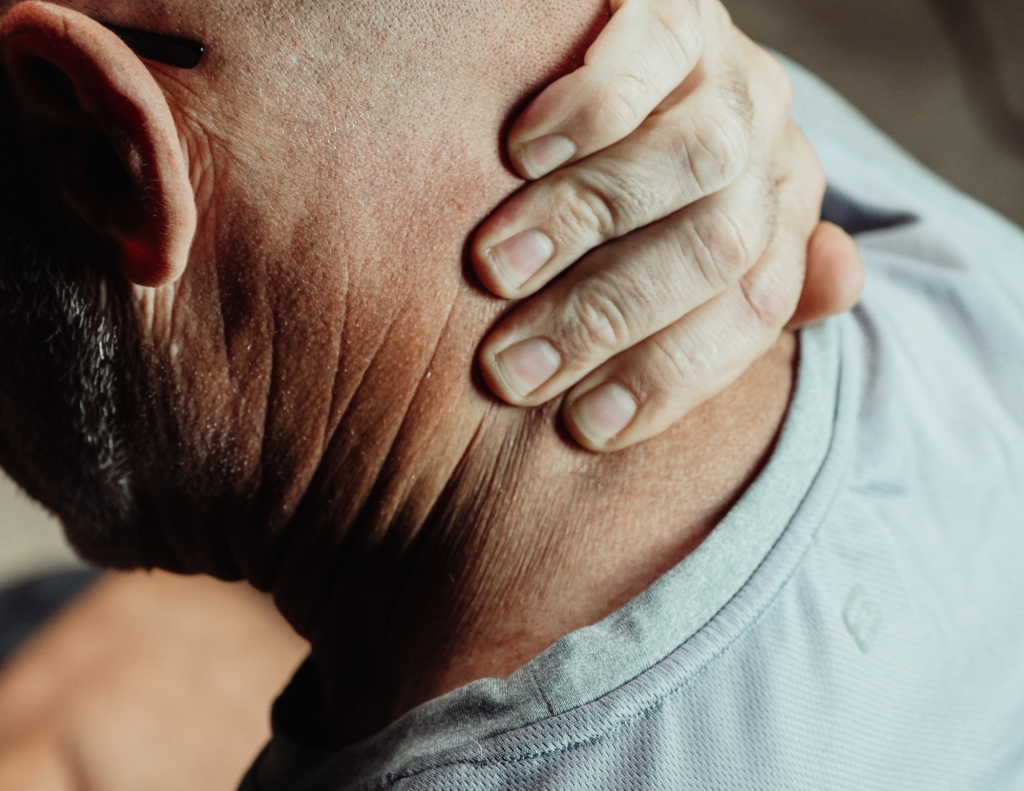Feeling Stiff? Here’s Why You’re Losing Mobility in Your 40s and 50s—And What You Can Do About It

If you're in your 40s or 50s and noticing that you're moving a little slower, waking up achier, or feeling tighter after a long day—you're not imagining it. But the cause isn’t just “getting older.”
Stiffness is often a sign that your body is out of balance—and with the right steps, you can absolutely get your mobility back.
Let’s dive into the real reasons your body is feeling stiffer and what you can start doing today to feel more flexible, mobile, and energized.
Why Your Body Feels Stiffer in Midlife (It’s Not Just Aging)
The truth? Mobility loss isn’t inevitable. It’s a symptom of deeper imbalances that build up over time—many of which are reversible. Understanding the “why” helps you feel empowered to take the next step.
Here are the top causes:
1. Joint Misalignments
Your spine plays a central role in your movement. Over time—especially with desk jobs, old injuries, or stress—the joints in your spine and hips can become misaligned. When that happens, nearby muscles tighten up to compensate, leading to stiffness, reduced range of motion, and sometimes pain.
➡️ What you can do now: Pay attention to how you sit, stand, and move throughout the day. Change positions frequently and avoid slouching when using your phone or computer.
2. Loss of Muscle Balance & Flexibility
After age 35, muscle mass naturally declines—unless you’re actively maintaining it. Sedentary habits or repetitive movement patterns (like always leaning to one side when sitting or driving) create imbalances in strength and flexibility, especially in your hips, shoulders, and spine.
➡️ What you can do now: Try adding gentle mobility or isometric exercises into your daily routine, like wall sits, hip bridges, or cat-cow stretches to keep things activated and aligned.
3. Dehydrated or Restriced Fascia
Fascia is the thin connective tissue wrapped around your muscles, joints, and organs. When it becomes inflamed or stuck—often from lack of movement or injury—it restricts how smoothly your body moves.
➡️ What you can do now: Daily stretching, foam rolling, and staying hydrated can help fascia stay more elastic and responsive.
4. Decreased Joint Lubrication
As we age, we produce less synovial fluid, the slippery substance that cushions your joints. Without it, your joints feel more “grindy,” and movement becomes more uncomfortable.
➡️ What you can do now: Movement is medicine! Low-impact activity like walking or gentle stretching stimulates joint lubrication and keeps you limber.
5. Systemic Inflammation
This sneaky culprit builds quietly from poor diet, high stress, environmental toxins, and lack of sleep. It’s the background “noise” that makes your body feel inflamed, swollen, or stiff—even if you haven’t done anything strenuous.
➡️ What you can do now: Anti-inflammatory foods like leafy greens, berries, turmeric, and omega-3-rich fish can help reduce overall inflammation. Sleep and stress management also play a big role.
ARTICLE CONTINUES BELOW
Schedule Your Telehealth Consultation
We would love to sit down with you and chat about your experiences and current health complaints.
 Wait—Is This Really About Mobility?
Wait—Is This Really About Mobility?
Yes, and here’s why it matters.
Mobility = Quality of Life.
If you’re losing mobility now, it can lead to:
- Injuries from simple movements
- Chronic pain
- Decreased activity and energy
- Poor posture and alignment
- Faster joint degeneration
But it doesn’t have to be that way.
 5 Simple Mobility Checks You Can Try Today
5 Simple Mobility Checks You Can Try Today
Try these quick tests at home to see if your body’s asking for more support:
1. Can you touch your toes comfortably without bending your knees?
2. Can you squat down (like picking something off the floor) without losing balance?
3. Can you rotate your head side to side easily?
4. Can you twist from your waist with minimal tightness?
5. Can you reach both arms overhead without discomfort? If any of these movements feel tight, painful, or limited, your body is compensating—and it’s worth paying attention.
You Can Feel Better—Here’s How
We work with many patients in their 40s, 50s, and beyond who believed their stiffness was just “normal.”
But after we assess their spinal health, movement patterns, and inflammation levels, we often find specific and correctable root causes.
Here’s what may be part of your care plan at Back On Track 2 Wellness:
• Chiropractic Adjustments to realign the spine and joints so your body moves the way it’s meant to
• Decompression Therapy to reduce nerve pressure and rehydrate spinal discs
• Targeted Mobility & Strength Exercises to restore balance in your muscle chains
• Cryotherapy to reduce inflammation and pain quickly
• Lifestyle and Functional Medicine Support to address inflammation, nutrition, and stress
• Anti-inflammatory Supplements (when needed) to support your body’s healing from the inside out
Real Patient Wins
One of our patients, a 47-year-old weekend cyclist, came in complaining of persistent hip tightness and lower back stiffness. After 3 weeks of chiropractic care, decompression, and a simple stretch plan, he told us:
“I used to feel stiff just getting out of the car. Now I’m back on the bike and actually feel better after I ride. I thought I was just getting old—turns out I was just out of alignment.”
This isn’t a one-off story. We hear this all the time.
Feeling Stiff? Let’s Get You Moving Again
If you’re feeling tight, achy, or not as mobile as you once were, know this: You’re not broken. Your body just needs the right support.
At Back On Track 2 Wellness, we specialize in helping people in midlife move well again—so they can keep doing what they love for decades to come.
👉 Need support? Contact us today and let’s create a plan that’s right for your body, your goals, and your lifestyle.
Because your 40s and 50s shouldn’t feel like the beginning of the end—they can be your most vibrant years yet.
Schedule Your Telehealth Consultation
We would love to sit down with you and chat about your experiences and current health complaints.
The information on this website has not been evaluated by the Food & Drug Administration or any other medical body. We do not aim to diagnose, treat, cure or prevent any illness or disease. Information is shared for educational purposes only. You must consult your doctor before acting on any content on this website, especially if you are pregnant, nursing, taking medication, or have a medical condition.

By Dr. Todd W. Bunning
Dr. Todd W. Bunning’s Chiropractic and Functional Medicine services reach far beyond the local Roseville area, with webcam consultations available for patients in any location. With over 21+ years of Private Practice experience, Dr. Todd continues to focus on the individual: science-based methods to address whole-body health factors.
Dr. Todd’s education didn’t stop when he graduated from Life West Chiropractic College in 2003. Today, he’s continuing to receive training and is chipping away on numerous post-graduate degree programs. This unique blend of clinical health investigation and Lifestyle Medicine application helps people of all ages find the underlying factors that result in chronic disease.